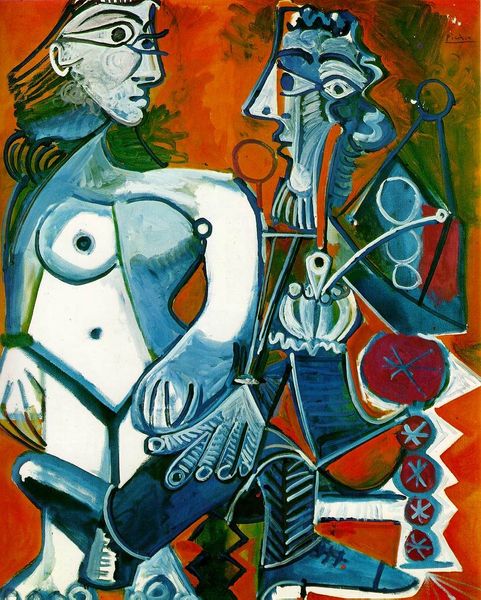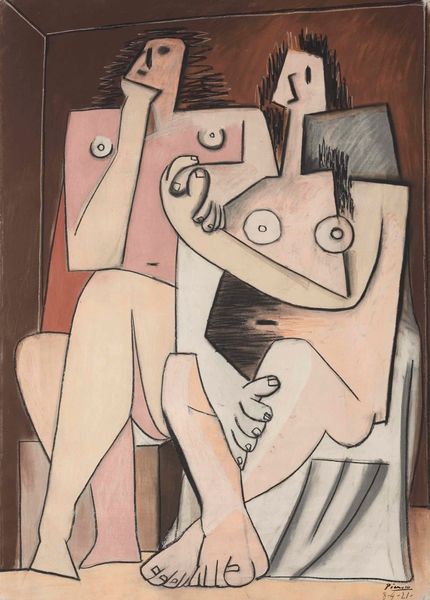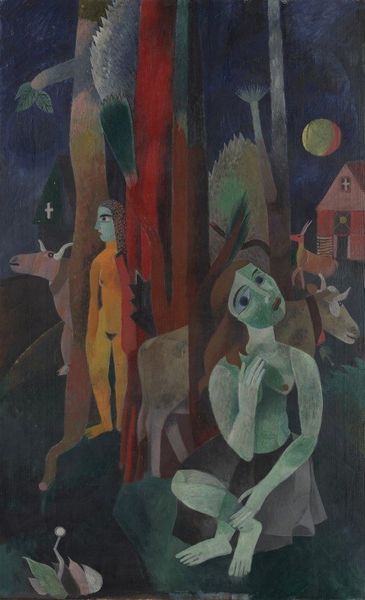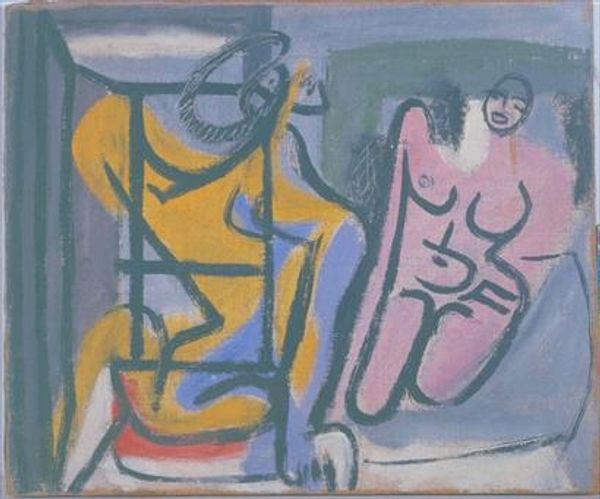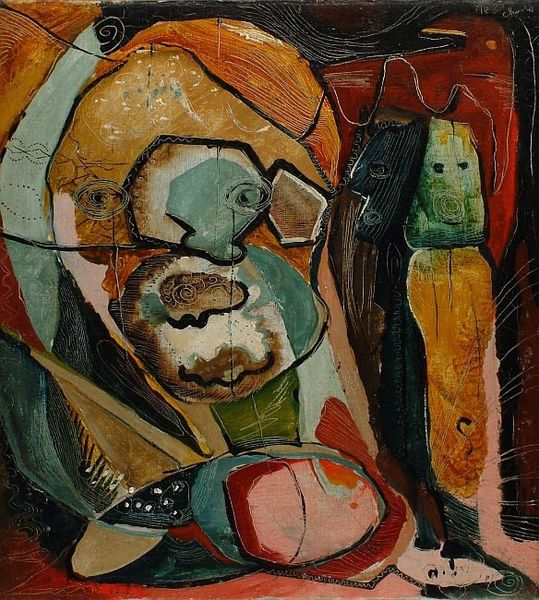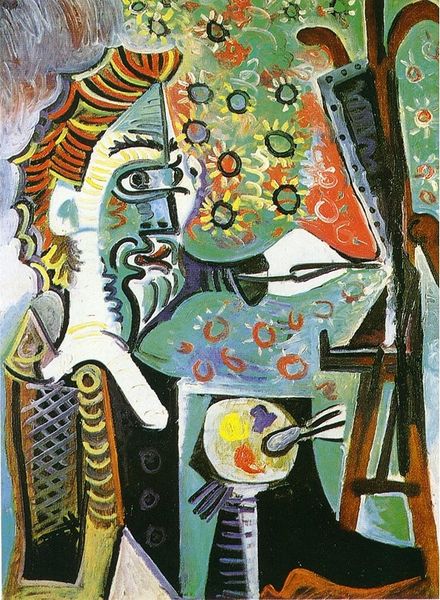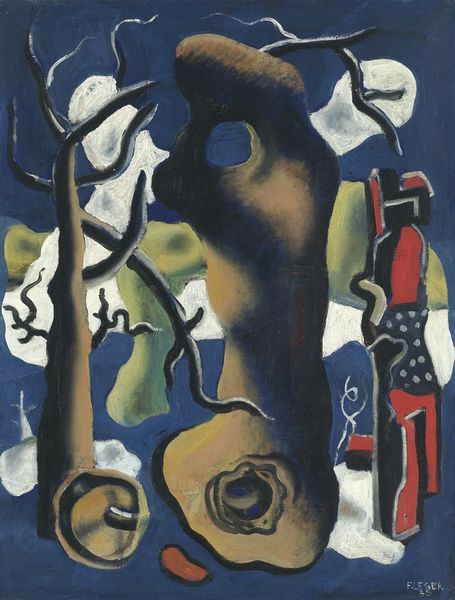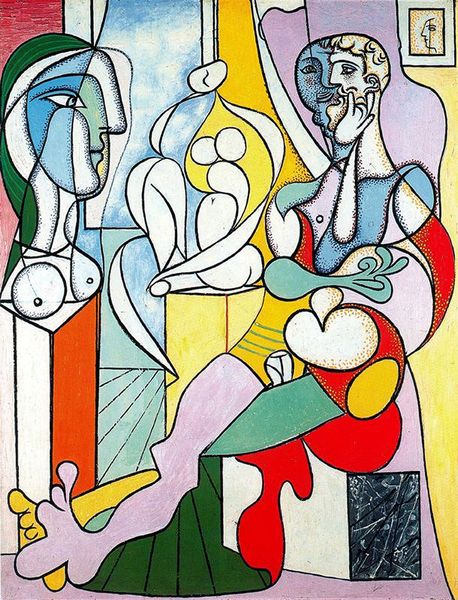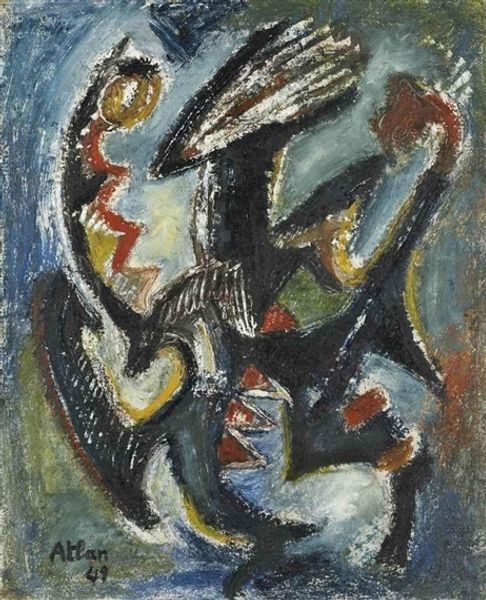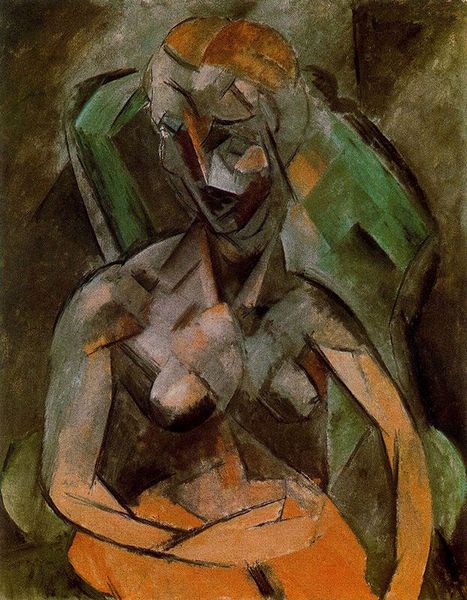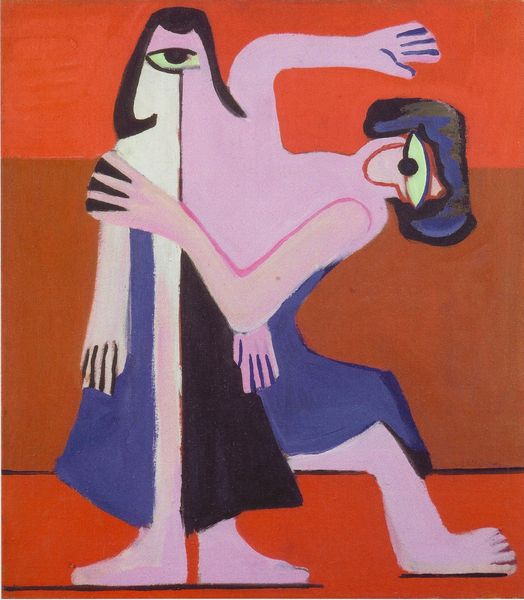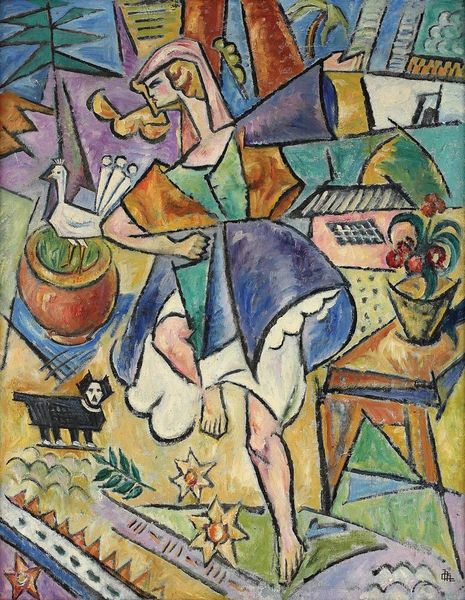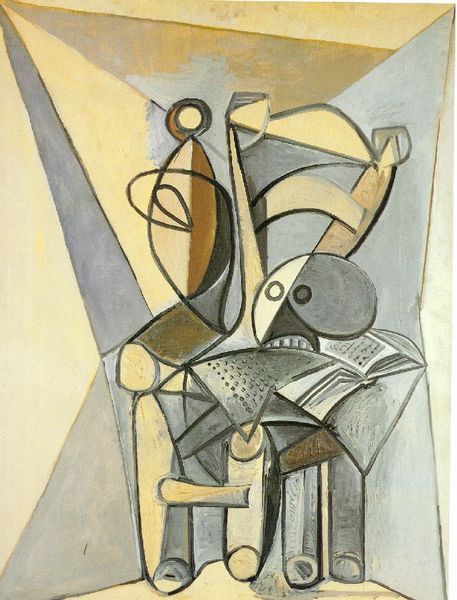
Copyright: Emil Filla,Fair Use
Emil Filla made "Tři Grácie", or "Three Graces", and this image reinterprets a classical subject through a cubist lens. Filla was a Czech artist working in the first half of the 20th century when artists across Europe were grappling with questions about how to represent a rapidly changing world. The rise of industry, shifting social mores, and the cataclysm of war all put pressure on traditional artistic forms. Filla, like Picasso and Braque, turned to cubism, an approach that broke down forms and reassembled them on the canvas in a way that reflected this fractured reality. The Three Graces are a common subject in Western art, often representing beauty, charm, and joy. By rendering them in a cubist style, Filla challenges the classical ideals of beauty and harmony, and invites us to consider the ways in which those ideals were being disrupted and redefined in the modern era. By studying manifestos and other writings by Filla and his contemporaries, we can come to understand the cultural shifts that made this image possible.
Comments
No comments
Be the first to comment and join the conversation on the ultimate creative platform.
